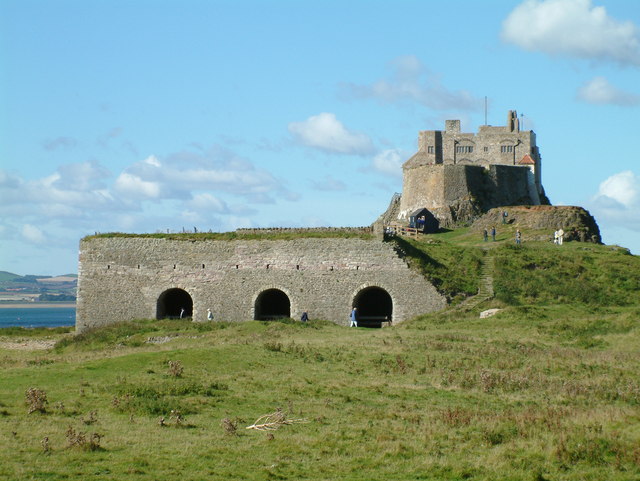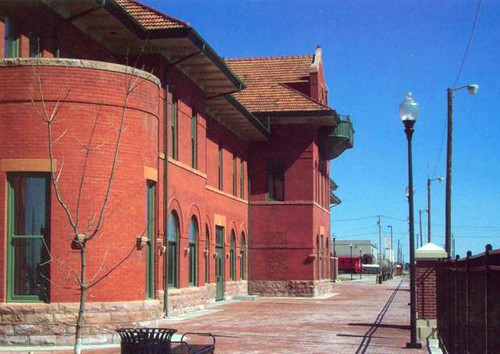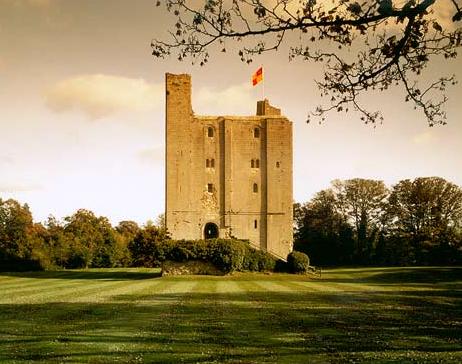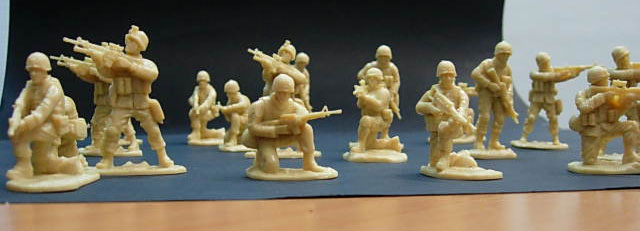 in the images above you'll see that most zouave figures get the trousers of the soldier wrong, if you look at the photos i tiook at magenta you'll see that the trousers are much better suited to the legion so you only have to change the zouaves heads to kepis, you can keep the tunic as i have heard the legion actually fought in short blue tunics instead of greatcoats although i havew no idea what is really true.
in the images above you'll see that most zouave figures get the trousers of the soldier wrong, if you look at the photos i tiook at magenta you'll see that the trousers are much better suited to the legion so you only have to change the zouaves heads to kepis, you can keep the tunic as i have heard the legion actually fought in short blue tunics instead of greatcoats although i havew no idea what is really true.Wednesday, 9 March 2011
conversion ideas for italy 1859
 in the images above you'll see that most zouave figures get the trousers of the soldier wrong, if you look at the photos i tiook at magenta you'll see that the trousers are much better suited to the legion so you only have to change the zouaves heads to kepis, you can keep the tunic as i have heard the legion actually fought in short blue tunics instead of greatcoats although i havew no idea what is really true.
in the images above you'll see that most zouave figures get the trousers of the soldier wrong, if you look at the photos i tiook at magenta you'll see that the trousers are much better suited to the legion so you only have to change the zouaves heads to kepis, you can keep the tunic as i have heard the legion actually fought in short blue tunics instead of greatcoats although i havew no idea what is really true.Saturday, 5 March 2011
lindisfarne castle

The castle is located in what was once the very volatile border area between England and Scotland. Not only did the English and Scots fight, but the area was frequently attacked by Vikings. The castle was built in 1550, around the time that Lindisfarne Priory went out of use, and stones from the priory were used as building material. It is very small by the usual standards, and was more of a fort. The castle sits on the highest point of the island, a whinstone hill called Beblowe.

Lindisfarne's position in the North Sea made it vulnerable to attack from Scots and Norsemen, and by Tudor times it was clear there was a need for a stronger fortification. This resulted in the creation of the fort on Beblowe Crag between 1570 and 1572 which forms the basis of the present castle.

After Henry VIII suppressed the priory, his troops used the remains as a naval store. In 1542 Henry VIII ordered the Earl of Rutland to fortify the site against possible Scottish invasion. By December 1547, Ralph Cleisbye, Captain of the fort, had guns including; a wheel mounted demi-culverin; 2 brass sakers; a falcon; and another fixed demi-culverin.
 However, Beblowe Crag itself was not fortified until 1549 and Sir Richard Lee saw only a decayed platform and turf rampart there in 1565. Elizabeth I then had work carried out on the fort, strengthening it and providing gun platforms for the new developments in artillery technology. These works in 1570 and 1571 cost £1191.When James I came to power in England, he combined the Scottish and English thrones, and the need for the castle declined. At this time the castle was still garrisoned from Berwick and protected the small Lindisfarne Harbour.
However, Beblowe Crag itself was not fortified until 1549 and Sir Richard Lee saw only a decayed platform and turf rampart there in 1565. Elizabeth I then had work carried out on the fort, strengthening it and providing gun platforms for the new developments in artillery technology. These works in 1570 and 1571 cost £1191.When James I came to power in England, he combined the Scottish and English thrones, and the need for the castle declined. At this time the castle was still garrisoned from Berwick and protected the small Lindisfarne Harbour.In the eighteenth century the castle was occupied briefly by Jacobite rebels, but was quickly recaptured by soldiers from Berwick who imprisoned the rebels; they dug their way out and hid for nine days close to nearby Bamburgh Castle before making good their escape.
In later years the castle was used as a coastguard look-out and became something of a tourist attraction. Charles Rennie Mackintosh made a sketch of the old fort in 1901.
In 1901, it became the property of Edward Hudson, a publishing magnate and the owner of Country Life magazine. He had it refurbished in the Arts and Crafts style by Sir Edwin Lutyens. It is said that Hudson and the architect came across the building while touring Northumberland and climbed over the wall to explore inside.
The walled garden, which had originally been the garrison's vegetable plot, was designed by Lutyens' long-time friend and collaborator, Gertrude Jekyll between 1906 and 1912. It is some distance away from the castle itself. Between 2002 and 2006 it was restored to Jekyll's original planting plan which is now held in the Reef Collection at the University of California, Berkeley. The castle, garden and nearby lime kilns have been in the care of the National Trust since 1944 and are open to visitors.
Lutyens used upturned disused boats (herring busses) as sheds. In 2005, two of the boats were destroyed by arson. They were replaced in 2006 and the third boat has now been renovated by the National Trust. The replacement of the two burned boats by two new boat sheds features on a new DVD Diary of an Island. This shows a fishing boat from Leith being cut in half in a boatyard in Eyemouth and the two "sheds" being transported to the island and lifted into place by crane.
The Spanish architect Enric Miralles used Lutyens' upturned herring busses as an inspiration for his design of the Scottish Parliament Building in Edinburgh
Thursday, 3 March 2011
dodgecity
The first settlement of non-indigenous people in the area that became Dodge City was Fort Mann. Built by civilians in 1847, Fort Mann was intended to provide protection for travelers on the Santa Fe Trail. Fort Mann collapsed in 1848 after an Indian attack. In 1850, the U.S. Army arrived to provide protection in the region and constructed Fort Atkinson on the old Fort Mann site. The army abandoned Fort Atkinson in 1853. Military forces on the Santa Fe Trail were reestablished farther north and east at Fort Larned in 1859, but the area around what would become Dodge City remained vacant until after the Civil War. In 1865, as the Indian Wars in the West began heating up, the army constructed Fort Dodge to assist Fort Larned in providing protection on the Santa Fe Trail. Fort Dodge remained in operation until 1882.
Military forces on the Santa Fe Trail were reestablished farther north and east at Fort Larned in 1859, but the area around what would become Dodge City remained vacant until after the Civil War. In 1865, as the Indian Wars in the West began heating up, the army constructed Fort Dodge to assist Fort Larned in providing protection on the Santa Fe Trail. Fort Dodge remained in operation until 1882.
 Military forces on the Santa Fe Trail were reestablished farther north and east at Fort Larned in 1859, but the area around what would become Dodge City remained vacant until after the Civil War. In 1865, as the Indian Wars in the West began heating up, the army constructed Fort Dodge to assist Fort Larned in providing protection on the Santa Fe Trail. Fort Dodge remained in operation until 1882.
Military forces on the Santa Fe Trail were reestablished farther north and east at Fort Larned in 1859, but the area around what would become Dodge City remained vacant until after the Civil War. In 1865, as the Indian Wars in the West began heating up, the army constructed Fort Dodge to assist Fort Larned in providing protection on the Santa Fe Trail. Fort Dodge remained in operation until 1882.
The town of Dodge City can trace its origins to 1871 when rancher Henry J. Sitler built a sod house west of Fort Dodge to oversee his cattle operations in the region. Conveniently located near the Santa Fe Trail and Arkansas River, Sitler's house quickly became a stopping point for travelers.
 With the Santa Fe Railroad rapidly approaching from the east, others saw the commercial potential of the region. In 1872, just five miles (8 km) west of Fort Dodge, settlers platted out and founded the town of Dodge City. George M. Hoover established the first bar in a tent to service thirsty soldiers from Fort Dodge.
With the Santa Fe Railroad rapidly approaching from the east, others saw the commercial potential of the region. In 1872, just five miles (8 km) west of Fort Dodge, settlers platted out and founded the town of Dodge City. George M. Hoover established the first bar in a tent to service thirsty soldiers from Fort Dodge. cherilea The railroad arrived in September to find a town ready and waiting for business. The early settlers in Dodge City traded in buffalo bones and hides and provided a civilian community for Fort Dodge. However, with the arrival of the railroad, Dodge City soon became involved in the cattle trade.
cherilea The railroad arrived in September to find a town ready and waiting for business. The early settlers in Dodge City traded in buffalo bones and hides and provided a civilian community for Fort Dodge. However, with the arrival of the railroad, Dodge City soon became involved in the cattle trade.
essex castles
Hedingham Castle's Norman keep, 110 feet high, was built c.1140 by Aubrey de Vere and is still owned by one of his descendants, Jason Lindsay and his wife Demetra. There are four floors to explore, including a magnificent Banqueting Hall spanned by a remarkable 28 foot arch, one of the largest Norman arches in England. A good view of this splendid room can be obtained from the Minstrels' Gallery, built within the thickness of the 12 foot walls.
A visit to the castle and its beautiful is a must
Hedingham Castle may occupy the site of an earlier castle believed to have been built in the late 11th or early 12th century by Aubrey de Vere I, a Norman baron. Hedingham was one of the largest manors among those acquired by Aubrey I. The Domesday Book records that he held the manor of Hedingham by 1086, and he ordered that vineyards be planted[1]. It became the head of the Vere barony.
Aubrey de Vere I, a Norman baron. Hedingham was one of the largest manors among those acquired by Aubrey I. The Domesday Book records that he held the manor of Hedingham by 1086, and he ordered that vineyards be planted[1]. It became the head of the Vere barony.
Aubrey II or Aubrey III are candidates for initiating the construction of a major stone building at Hedingham, possibly to reflect the enhanced status of the family. In 1133 Aubrey de Vere II, son and heir of the first Aubrey, was created master chamberlain of England by Henry I. In 1141 his son, Aubrey de Vere III, was granted an earldom by Empress Matilda. By that time he had been Count of Guines for several years by right of his wife's claim to that continental territory. Earl Aubrey was forced to surrender his castles to King Stephen in 1143, as was his brother-in-law Geoffrey de Mandeville, first earl of Essex. He recovered the castles by the mid 1140s.
Matilda, wife of King Stephen, died at Castle Hedingham on May 3, 1152.[2] The castle was besieged twice, in 1216 and 1217, during the dispute between King John, rebel barons, and the French prince. (In both cases the sieges were short and successful for those besieging the castle).
The great hall stood to the southwest and a chapel to the south of the stone keep within the inner bailey.[3] A bridge connects the inner bailey to the outer bailey lying to the northeast.
The castle was held by the de Vere family until 1625. Among the more famous earls are Robert de Vere, 3rd Earl of Oxford; Robert de Vere, 9th Earl of Oxford; John de Vere, 13th Earl of Oxford; and Edward de Vere, 17th Earl of Oxford. The castle and estate are now owned by the Lindsay family, who are descendants of the de Veres.
A visit to the castle and its beautiful is a must
Hedingham Castle may occupy the site of an earlier castle believed to have been built in the late 11th or early 12th century by
 Aubrey de Vere I, a Norman baron. Hedingham was one of the largest manors among those acquired by Aubrey I. The Domesday Book records that he held the manor of Hedingham by 1086, and he ordered that vineyards be planted[1]. It became the head of the Vere barony.
Aubrey de Vere I, a Norman baron. Hedingham was one of the largest manors among those acquired by Aubrey I. The Domesday Book records that he held the manor of Hedingham by 1086, and he ordered that vineyards be planted[1]. It became the head of the Vere barony.Aubrey II or Aubrey III are candidates for initiating the construction of a major stone building at Hedingham, possibly to reflect the enhanced status of the family. In 1133 Aubrey de Vere II, son and heir of the first Aubrey, was created master chamberlain of England by Henry I. In 1141 his son, Aubrey de Vere III, was granted an earldom by Empress Matilda. By that time he had been Count of Guines for several years by right of his wife's claim to that continental territory. Earl Aubrey was forced to surrender his castles to King Stephen in 1143, as was his brother-in-law Geoffrey de Mandeville, first earl of Essex. He recovered the castles by the mid 1140s.
Matilda, wife of King Stephen, died at Castle Hedingham on May 3, 1152.[2] The castle was besieged twice, in 1216 and 1217, during the dispute between King John, rebel barons, and the French prince. (In both cases the sieges were short and successful for those besieging the castle).
The great hall stood to the southwest and a chapel to the south of the stone keep within the inner bailey.[3] A bridge connects the inner bailey to the outer bailey lying to the northeast.
The castle was held by the de Vere family until 1625. Among the more famous earls are Robert de Vere, 3rd Earl of Oxford; Robert de Vere, 9th Earl of Oxford; John de Vere, 13th Earl of Oxford; and Edward de Vere, 17th Earl of Oxford. The castle and estate are now owned by the Lindsay family, who are descendants of the de Veres.
Wednesday, 2 March 2011
Friday, 25 February 2011
Thursday, 24 February 2011
ww1 hand grenades
 I never ever saw these Crescent ww1 troops when I was a kid and I probably wouldn't have bought them anyway as I bought Western types but these are the rarest of Crescent production
I never ever saw these Crescent ww1 troops when I was a kid and I probably wouldn't have bought them anyway as I bought Western types but these are the rarest of Crescent productionAugust 1914 marked the end of a relatively peaceful century in Europe with unprecedented invention and new science. The 19th-century vision of a peaceful future fed by ever-increasing prosperity through technology was largely shattered by the war's and, after the technological escalation during World War II, it was apparent that whatever the gains in prosperity and comfort due to technology applied to civilian uses, these benefits would always be under the shadow of the horrors of technology applied to warfare.
The earlier years of the First World War can be characterized as a clash of 20th-century technology with 19th-century warfare in the form of ineffectual battles with huge numbers of casualties on both sides. It was not until the final year of the war that the major armies made effective steps in revolutionizing matters of command and control and tactics to adapt to the modern battlefield, and started to harness the myriad new technologies to effective military purposes. Tactical reorganizations (such as shifting the focus of command from the 100+ man company to the 10+ man squad) went hand-in-hand with armored cars, the first submachine guns, and automatic rifles that could be carried and used by one man.
Wednesday, 23 February 2011
Sunday, 20 February 2011
my collection.REPLICANTS BOARDING PARTY
i used to buy directly from replicants but they changed the way they sell so now i dont buy, shame cos peter cole is a top geezer.
Saturday, 19 February 2011
my collection . maximillian armour

I was walking in vicenza in 1980 when i came across an old toy shop and bought a bunch of gthese old britains for pence.I photographed this with a hundred pound sony cybershot.
Maximilian armour is a modern term applied to the style of early 16th century German plate armour apparently first made for the Emperor Maximilian I. The armour is characterized by armets and close helmets with bellows visors, small fan-shaped narrow and parallel fluting often covering most of the harness (but never the greaves), etching, work taken from woodcuts and sharply waisted cuirasses and squared sabatons.
Maximilian armour is a modern term applied to the style of early 16th century German plate armour apparently first made for the Emperor Maximilian I. The armour is characterized by armets and close helmets with bellows visors, small fan-shaped narrow and parallel fluting often covering most of the harness (but never the greaves), etching, work taken from woodcuts and sharply waisted cuirasses and squared sabatons.
According to an alternative version the name is related with Maximilian II as the last Maximilian Armour was made especially for him in 1557 - 17 years after it passed out of use (according to Liliane Funcken & Fred Funcken[1] it passed out of use in 1540, but the last one was made for Maximilian II).

The armour itself was designed to imitate the pleated clothing that was considered fashionable in Europe at the time. This was a trend that was developing in 15th century Europe of creating armour that not only provided the maximum amount of protection, but was also visually pleasing. It combined the rounded Italian style of rounded armour production with the German fluted style.
lone star and crescent indians
He was 31 years old, and a Sepoy in the 6th battalion in the 13th frontier force, in the indian armywhen the following deed took place for which he was awarded the VC.
On 9 April 1945 near Fusignano, Italy, at the start of the Allied spring 1945 offensive Haidar's battalion was tasked with a difficult assault crossing of the Senio River. Only Sepoy Ali Haidar and the two other men of his section managed to get across under heavy machine-gun fire.
Then, while the other two covered him, the sepoy attacked the nearest strong point and, in spite of being wounded, put it out of action. In attacking a second strong-point he was again severely wounded but managed to crawl closer, throw a grenade and charge the post; two of the enemy were wounded, the remaining two surrendered. The rest of the company were than able to cross the river and establish a bridgehead
On 9 April 1945 near Fusignano, Italy, at the start of the Allied spring 1945 offensive Haidar's battalion was tasked with a difficult assault crossing of the Senio River. Only Sepoy Ali Haidar and the two other men of his section managed to get across under heavy machine-gun fire.
Then, while the other two covered him, the sepoy attacked the nearest strong point and, in spite of being wounded, put it out of action. In attacking a second strong-point he was again severely wounded but managed to crawl closer, throw a grenade and charge the post; two of the enemy were wounded, the remaining two surrendered. The rest of the company were than able to cross the river and establish a bridgehead
Friday, 18 February 2011
dieppe
 The Dieppe Raid, also known as The Battle of Dieppe, Operation Rutter or later on Operation Jubilee, during the Second World War, was an Allied attack on the German-occupied port of Dieppe on the northern coast of France on 19 August 1942.
The Dieppe Raid, also known as The Battle of Dieppe, Operation Rutter or later on Operation Jubilee, during the Second World War, was an Allied attack on the German-occupied port of Dieppe on the northern coast of France on 19 August 1942. The assault began at 5:00 AM and by 10:50 AM the Allied commanders had been forced to call a retreat. Over 6,000 infantrymen, predominantly Canadian, were supported by large Royal Navy and Royal Air Force contingents.
The assault began at 5:00 AM and by 10:50 AM the Allied commanders had been forced to call a retreat. Over 6,000 infantrymen, predominantly Canadian, were supported by large Royal Navy and Royal Air Force contingents. The objective was to seize and hold a major port for a short period, both to prove it was possible and to gather intelligence from prisoners and captured materials while assessing the German responses. The Allies also wanted to destroy coastal defences, port structures and all strategic buildings.
The objective was to seize and hold a major port for a short period, both to prove it was possible and to gather intelligence from prisoners and captured materials while assessing the German responses. The Allies also wanted to destroy coastal defences, port structures and all strategic buildings.
No major objectives of the raid were accomplished. A total of 3,623 of the 6,086 men (almost 60%) who made it ashore were either killed, wounded, or captured. The air force failed to lure the Luftwaffe into open battle, losing 96 aircraft (at least 32 to Flak or accidents) c
 ompared to 48 lost by the Luftwaffe, while the Royal Navy lost 33 landing craft and one destroyer. The events at Dieppe later influenced preparations for the North African (Operation Torch) and Normandy Landings (Operation Overlord).
ompared to 48 lost by the Luftwaffe, while the Royal Navy lost 33 landing craft and one destroyer. The events at Dieppe later influenced preparations for the North African (Operation Torch) and Normandy Landings (Operation Overlord).
Wednesday, 16 February 2011
Subscribe to:
Posts (Atom)









 american infantry for the first time. but what period?
american infantry for the first time. but what period?













